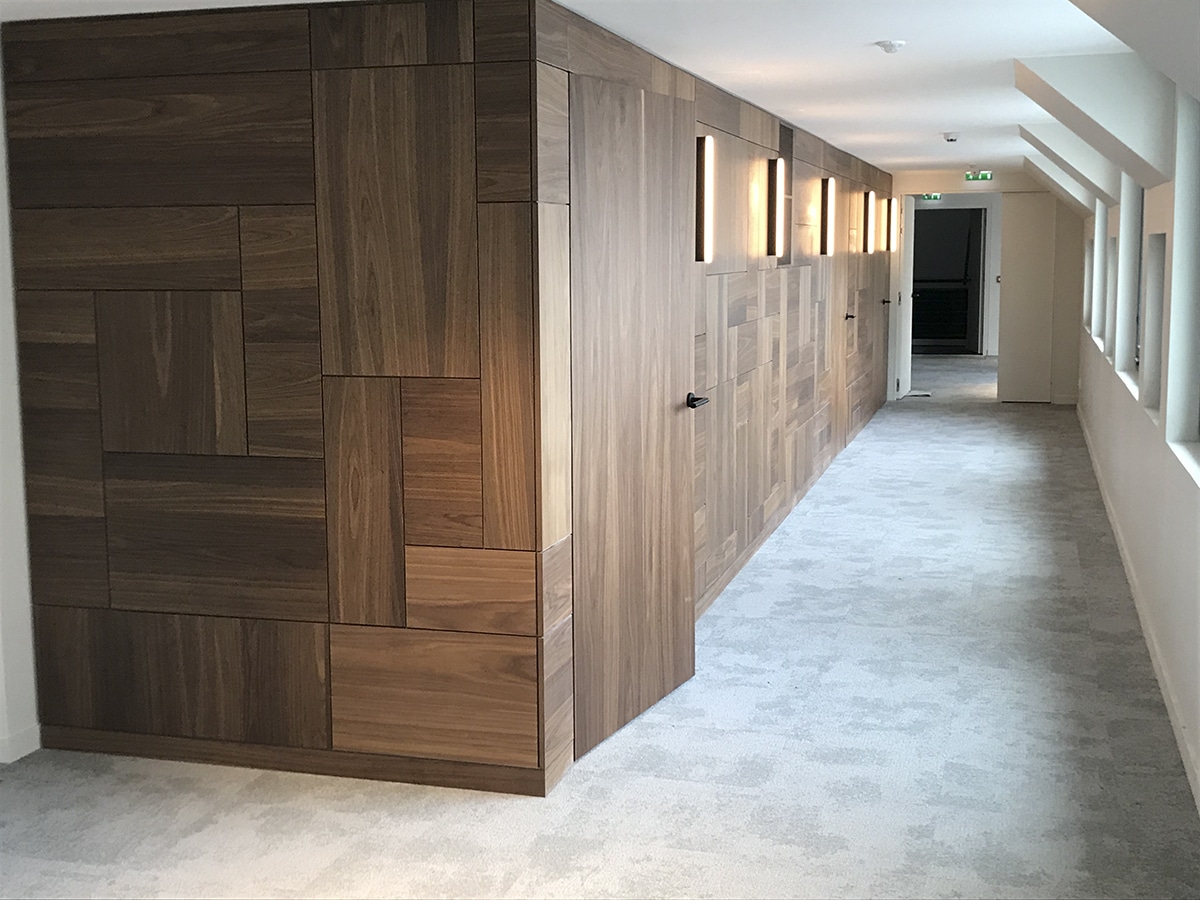Veneering is an essential technique in cabinetmaking and joinery. It consists of applying thin sheets of wood to a support to create an aesthetic covering that presents the precious wood in its most beautiful light, while offering practical and economic advantages. This know-how, mastered by the Compagnons de l'atelier Agencement Paul Champs, combines tradition and precision to create unique works.
What is veneer wood?
Wood veneer allows rare or precious woods such as rosewood, ebony or mahogany to be used on more stable surfaces such as plywood or chipboard. This technique is also popular for marquetry work, where it is combined with other materials such as bone, mother-of-pearl or stone to create refined patterns and decorations.
At Agencement Paul Champs, our craftsmen use a wide variety of veneers, from classic species (oak, sycamore, beech, etc.) to exotic and precious woods (rosewood, ebony, mahogany, etc.). These professionals guarantee high-quality work, thanks to their expertise.
The preparation of veneer
The sheets of wood, known as "strips", arrive at the workshop in bundles where they are stacked one after the other. However, these sheets do not always correspond to the dimensions of the finished panels. They have to be cut cleanly and straight with a guillotine, and then joined together with a jointer.
Stage 1: Cutting and assembly
The strips are first cut cleanly and straight using a cutter. Once ready, they are assembled using a jointer to ensure impeccable joins. Two main methods are used:
- Sliding assembly: the strips are laid side by side in the same direction.
- Open book assembly: the strips are placed symmetrically to create a mirror effect, adding a special aesthetic touch.
Stage 2: Gluing
Once prepared, the veneers are glued to chipboard or plywood panels. To avoid distorting the panel, the veneer is applied to both sides. The white glue used is carefully distributed before the assembly is placed under a hot press. This process speeds up the drying process, which takes just 5 minutes.
Finishing: making the most of veneer
Once gluing is complete, the panels go through an essential finishing stage. This phase includes :
- Sanding: to obtain a perfectly smooth surface.
- Tinting: to adjust the colour to the customer's preferences.
- hard-bottom varnishing and gumming: to protect the veneer and give it a lasting shine.
A expertise at the service of creation
When you call on Agencement Paul Champs for your project, veneering is not just a technique, it's an art. Thanks to their know-how, our craftsmen transform each panel into a unique work of art, meeting the aesthetic and functional requirements of our customers. Whether it's a made-to-measure piece of furniture or an ambitious architectural project, this methodology guarantees creations that live up to the highest expectations.
Are you looking to have veneer work carried out for your project?
Agencement Paul Champs helps you achieve your goal
thanks to the expertise of its workshop.

